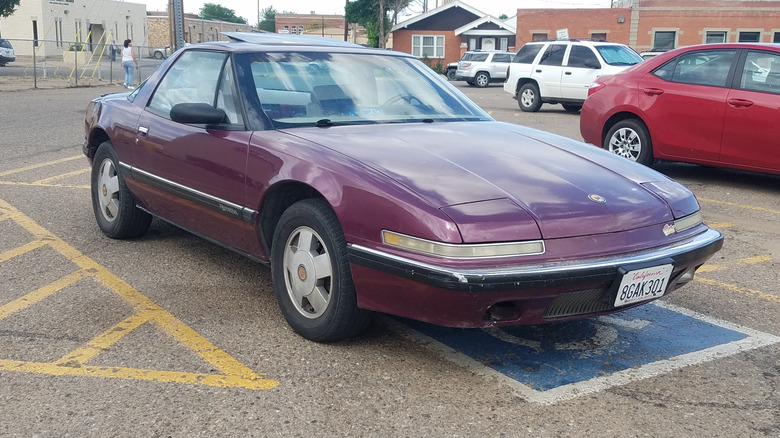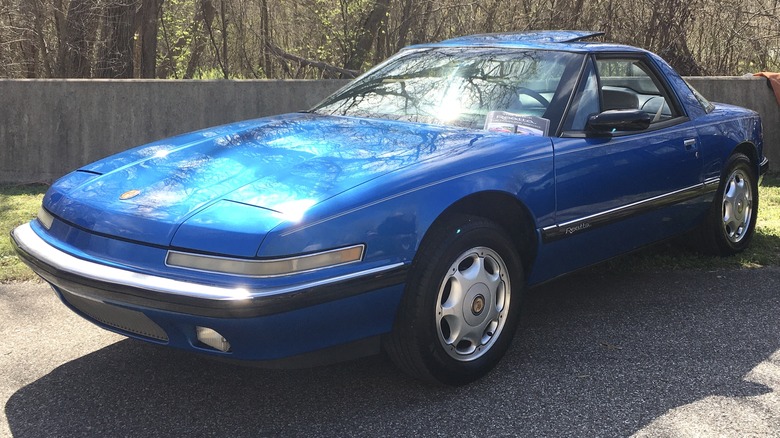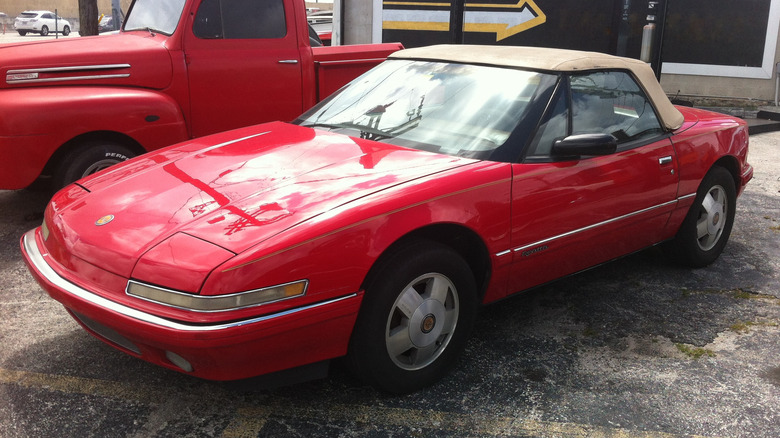The History Of Buick's Hidden Gem: The Reatta
You can describe the automobiles made by Buick in a lot of different ways, but chances are that you wouldn't exactly call them "cool." After the 1950s, they don't have much history of developing flashy, sporty vehicles that give off an air of speed. No, Buicks are luxurious, classy cars that are more affordable than you might expect. Its legacy isn't the Mustang or the Corvette. It has nice, solid sedans and SUVs that do the job for your average person.
In the late 1980s, though, Buick decided to dip a toe into the sports car arena when it introduced the short-lived Buick Reatta. This 1988 two-seater looked unlike everything else Buick had to offer at that time, and if you look at their vehicle lineup today, nothing looks like it. The Reatta was a sleek, sporty automobile and a knowing swerve for the company looking to find a newer audience.
While the car only lasted a few years on the production line, it remains an unusual part of Buick's history. It was one of their rare sports cars and became one of the company's rare convertibles towards the end of its run. For a company with such a defined personality, why would it have made a pivot like this?
Merging the sporty and the practical
If we're being honest, the average person does not have much need for a sports car. The want for a sports car comes from an aesthetic desire and feeling. Buick wanted to tap into that desire while delivering a vehicle that could acclimate incredibly well to everyday life. Jay Qualman, advertising manager for Buick at the time, told Car and Driver in 1988 about the company's mentality, "The more we dug into it, the more we found that there was a group of buyers who wanted a kind of sporty orientation but still wanted a practical car — one, quite frankly, that a fairly well-heeled guy could give his wife."
The car most people sighted for this kind of vehicle was a Mercedes 560SL, and considering that Mercedes-Benz is a luxury brand, that car was out of the price range for most people at $64,230 (nearly $167,000 adjusted for inflation). That price would still be a lot for a car today, 25 years later. This is where Buick comes in with the Reatta — despite having a framework similar to that of the Mercedes, the Buick Reatta dropped the price to $29,000 ($75,270 adjusted for inflation). That is still quite a bit of money for a vehicle, but it being less than half the price of the German automobile makes it all the more appealing to your average person.
[Featured image by TKOIII via Wikimedia Commons | Cropped and scaled | CC BY-SA 4.0]
The specs
When it was first launched, the Buick Reatta was only available in one configuration: a two-door coupé, and that would not change for the car's entire run, save for the option to make it a convertible in 1990. This was a true two-seater. Breaking tradition with your typical sports car, the Reatta featured a decently sized trunk, which would greatly help most people's day-to-day errands and activities.
This was a front-wheel drive, four-speed automatic vehicle powered by a 3.8L V6 engine that could reach up to 165 horsepower. This was the same engine you would find in other Buick coupés at the time, like the Riviera and LeSabre, but on a smaller frame. The Reatta had a 98.5-inch wheelbase compared to the 108-inch Riviera and the 110.8-inch LeSabre. Its power didn't reach the heights of other sports cars, but this was about mixing the sporty with the practical. After all, you just needed the essence of the sports car.
According to Motor Trend, the Reatta stopped production in 1991 after selling just 21,000 units in four years. Buick pivoted back to what it did best, to the point where it would not produce a convertible for another 25 years with the Cascada. It's always good when a Buick tries something new, but that doesn't mean it'll always catch on, even if it should have.
[Featured image by CZmarlin via Wikimedia Commons | Cropped and scaled | CC0 1.0]


